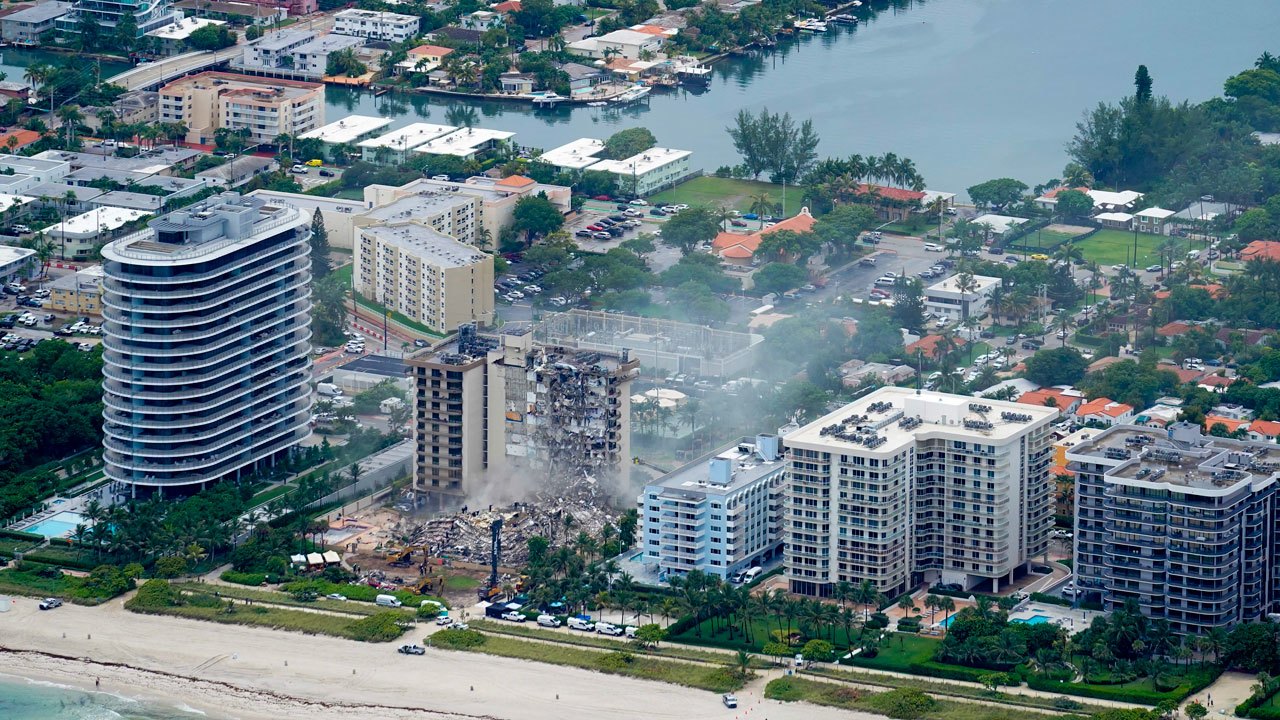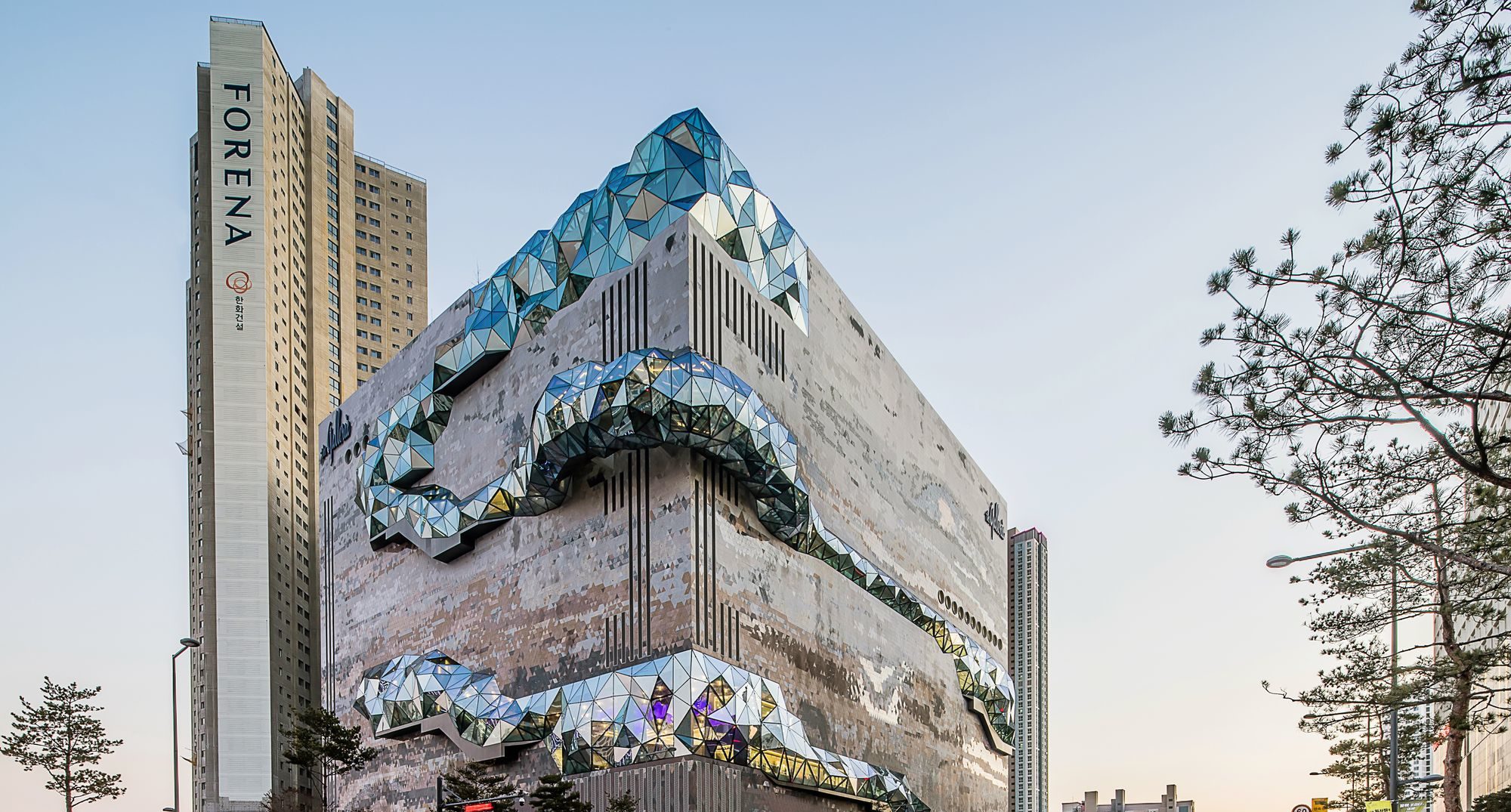In the early hours of the morning of June 24, 2021, Champlain Towers South, a huge portion of a 12-story condo building on the coast in Surfside, Florida, collapsed as many residents slept. Devastating surveillance footage captured 55 of the building’s 136 apartments disintegrating in just 12 seconds. The reason behind the collapse has yet to be determined; the building, located in a suburb of Miami, had withstood nearly four decades of extreme weather events, including Florida’s brutal hurricane seasons.
Extensive rescue efforts began in the immediate wake of the tragedy. Four days later, hopes of finding survivors are waning. While 10 deaths have been confirmed, more than 150 individuals remain unaccounted for at time of writing. Although the cause of the collapse remains uncertain — it may take years to piece together the answers — experts are already weighing in on what could have gone wrong.
Daylight shows how significant the Surfside, FL building collapse is.
A substantial part of the condo tower is gone. Search and rescue continues
A family reunification center has been set up at 9302 Collins Avenue.
If you are looking for family – you can call 305-614-1819. pic.twitter.com/MP3HYE9NoK— Brian Entin (@BrianEntin) June 24, 2021
A building consultant’s report from 2018 pointed to “a major error” with the building’s original design: an error that blocked water drainage at the tower’s base. According to the engineer’s assessment, recently made public by the town of Surfside, “the main issue with this building structure is that the entrance drive/pool deck/planter waterproofing is laid on a flat structure.” He attributed these issues to problems with the original contract documents, saying that they were “causing major structural damage to the concrete structural slab below these areas.”
While the report did not explicitly forewarn of the tragic collapse that took place three years after it was penned, at the time, the engineer, Frank Morabito, advised that “failure to replace the waterproofing in the near future will cause the extent of the concrete deterioration to expand exponentially,” before enumerating a list of extensive cracking and spalling on the columns, beams and walls in the parking garage below the pool deck.
An updated graphic of my interpretation of the Miami/Surfside condo collapse, based on the CCTV footage and debris photos. See replies for more details. pic.twitter.com/8qYZ0e7i06
— Kyle, W*rdle Avoider (@BoldlyBuilding2) June 25, 2021
Engineering experts interviewed by the Miami Herald seemingly corroborate the relevance of the issues that the engineer identified three years ago. In addition to the inspection report, building plans, photos of debris, an eyewitness account, and the surveillance video have been cited as further evidence that the collapse likely began beneath the pool deck, perhaps due to a structural column or concrete slab giving way, which then triggered the pool area to sink into the garage below, creating a sort of a crater or sinkhole beneath the midsection of the tower which then caved inwards.
Meanwhile, in the immediate wake of the disaster, the New York Times quoted Kenneth Direktor, a lawyer representing the resident-led association that operates the building. Acknowledging the damaged concrete and rusted steel in the engineer’s report, he warned that there was no direct link between the collapse and the review.
Aerial views of the condo building collapse in #Surfside, #Florida, near #MiamiBeach. Story: https://t.co/5ELnkRr2G1 pic.twitter.com/SZO8TpXNwv
— South Florida Sun Sentinel (@SunSentinel) June 24, 2021
The partial collapse of the Champlain Towers South condo building in Surfside, Fla., killed at least four people and left another 159 unaccounted for. https://t.co/iIyhkNxYgH
— NPR (@NPR) June 26, 2021
Constructed on reclaimed wetland, unstable land beneath the building has also been cited as a potential concern. Just last year, researchers at Florida International University published a report that outlines how the condo sank about two millimeters per year between 1993 and 1999. It is unclear how this impacted the building structurally. However, the study’s author, Professor Shimon Wdowinski, was quoted in the Miami Herald as saying, “We’ve seen much higher than that, but it stood out because most of the area was stable and showed no subsidence.” He added that this alone was not enough to cause a building to collapse.
Built by a group of developers in 1981, Champlain Towers South was one of three buildings in a complex; all were 12-story, L-shaped towers. The collapsed building contained more units than the others. Due to its standard 40-year review, the building was set to be transformed by a multi-million dollar refurbishment as part of this recertification, set to begin later this year.
Here's why the search and rescue mission following the Surfside condo collapse is unique. https://t.co/a3oagWOw0Z
— Miami Herald (@MiamiHerald) June 27, 2021
A full inquiry into the cause of the collapse will begin after the rescue mission. The Miami-Dade Police Department will lead the inquest, and Ron DeSantis, governor of Florida, has promised answers, saying “anybody affected by this directly wants that answer.”
Until then, international crews were doing everything in their power to find survivors, so far to no avail. “We do not have a resource problem,” said Surfside Mayor Charles Burkett, “we have a luck problem.” Teams from around the world have joined the search for survivors, using several strategies, including machines, drones and specially trained dogs. President Joe Biden officially declared the emergency in Florida, issuing federal assistance to aid local and state efforts.
Architizer will update this story as more information becomes available.









